23rd April 2020 – Must be Eased in Carefully Controlled Steps to Avoid a Resurgence.
A Blog by Dr David J Flavell PhD FRCPath & Dr Sopsamorn (Bee) Flavell BSc PhD
Scientific Directors of Leukaemia Busters
23rd April 2020
Unlocking Lockdown
Like many others we have been appalled to see the mounting number of protest groups in the US opposed to lockdown. A few days ago we saw gatherings of hundreds, maybe even thousands of protesters outside state capital buildings, loudly and deliberately flouting the social distancing rules to make their point.
US Dysfunctionality
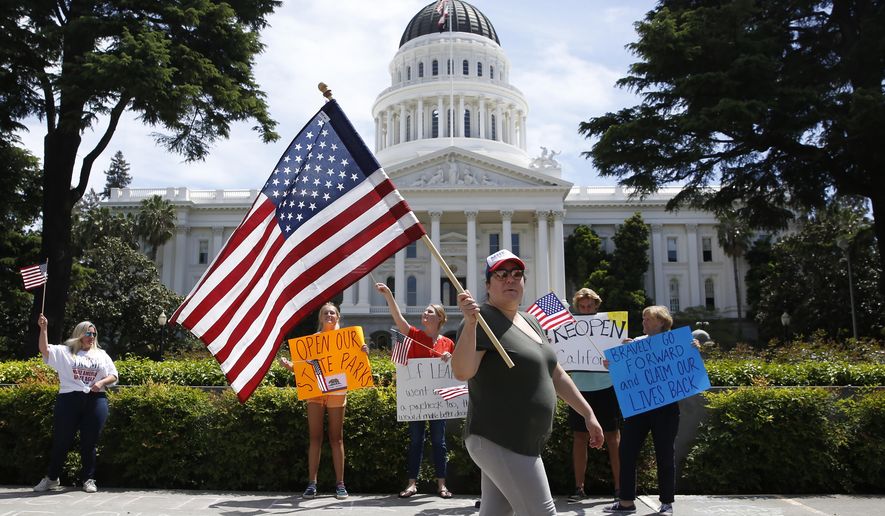
As cases and deaths continue to surge in the US it is a dangerous point in time to be contemplating any kind of release from lockdown, particularly for a country that is in such a catastrophic situation and faring the worse of anywhere in the world. Such an idea runs contrary to conventional wisdom on how any epidemic is brought under control, wisdom that is backed up from past experience, particularly that learned from the Spanish flu pandemic of 1918 that killed 50 million people where places that remained locked down longest did best and recovered to a normal way of life more quickly.
A Small Price to Pay
Let’s make sure that we avert our gaze away from a dysfunctional USA under a divisive and inept leadership and follow a more rational and proven steady course that will put the lid on the COVID-19 epidemic in the UK. A little more time spent at home during an extended lockdown will be a very small price to pay to ensure that the pandemic in our country is brought completely under control.
An Enigmatic Virus
We are dealing with a virus that is proving more malicious and puzzling than any we have encountered before, making it very important that we deal with the problem with the utmost caution. Coming out of lockdown from a pandemic event such COVID-19 is a dangerous moment and if not done correctly, could easily lead to resurgence and second wave of infections that will lead to a second lockdown.
We would be back to square one, possibly even worse off the second time round. Despite being continually harangued by the UK media over a plan and schedule for easing lockdown, the UK government have resisted giving any firm details about how this will be done, instead stating that a plan and schedule will develop as the national data on infection rates and death rates emerges over the coming weeks.
A Good Sign
To us this represents a good sign and is an indication that the UK government will not be bounced into taking decisions that are premature and which could potentially take us down a disastrous route. In the absence of an effective and widely available vaccine, something that we are unlikely to have for more than a year (see our blog on Immunity and Vaccination) means that we must at this stage in the game rely on stringent public health measures, contact tracing, quarantining and continued social distancing to allow our nation to return to at least some degree of normality within a reasonable time frame.
The big question is who will make the judgement to ease lockdown when the time comes and what criteria will be used to guide this?
The UK government have already published their criteria to begin the process of easing of lockdown which are stated as follows:-
- Making sure that the NHS can cope
- A sustained and consistent fall in the daily death rate
- Reliable data showing the rate of infection decreasing
- Ensuring that PPE will meet future demand
- Being confident that any adjustments would not risk a second peak
But we question if these criteria are sufficient and what else in addition to supplement these should be considered?
There are a number of questions to be asked about the governments five set criteria.
- What numbers of sustained falls in the daily death rate and rate of infection decrease will be taken as the point when a correct judgement will be made?
- Will this be arbitrary or will it be based on some form of good scientific evidence?
- The fifth point is even more problematic, who will honestly be able to judge whether any criterion or “adjustments” made would give the confidence needed to avoid a second peak?
We don’t think that this is possible considering the many unknowns about the SARS-CoV-2 virus and the way in which it is transmitted and behaves in the community.
No doubt it will be the SAGE group of scientific advisers to the government who will recommend when they think the time is right.
But will they make the right judgements?

Whilst the expert disease modelers and epidemiologists will undoubtedly play a major role here, their discipline can be notoriously inaccurate (as we saw with their wrong predictions for the likelihood of a pandemic earlier in the year). There will be a need on occasions to be flexible, responsive and to think outside of the box as and when unexpected new events unfold.
Our Suggested Ten Point Plan
We are not infectious disease experts but certain things are glaringly obvious to us which we like to believe are based on our way of thinking as scientists, admittedly working in another related field that has more similarities than differences. On that basis we would like to present you with our own broad ten point plan which is by no means final or correct in every way and is just based on our intuitive feel for potential remedies and solutions that might just allow a return to some normality in a staged sequence of un-locking’s. Here then are our ten points for you to inspect, reflect on, approve, suggest or criticise as you see fit.

- Genomic Testing – Before any lockdown is eased there must be sufficient RT-PCR or RT-LAMP testings on nose and throat swabs available nationally to deal with any suspected new cases and most importantly a mobile system to get testing to suspect new cases almost immediately. This will probably require specialised task forces to react instantly. These task forces could be assembled from the army of civilian volunteers who came forward earlier in the year to help the NHS. Once a new case is detected there MUST be a rigorous system of contact tracing and strictly enforced quarantine procedures in place for those contact traced individuals backed up by a properly managed database system run centrally capable of identifying each and every individual instantly. Swiftness of action and maintenance of an accurate cross referable database will be essential if this arm of the strategy is to work effectively.
![]()
- Contact Tracing by Phone App – a mobile phone App to assist with identifying individuals exposed to infected persons would assist greatly with contact tracing. Such a system is currently under evaluation but would require a minimum 50% take up rate to be effective. Such a system could use AI to identify and track individuals based on their GPS whereabouts and contact with known COVID-19 patients and interface with the centrally managed database as described in 1 above. The issue of privacy should not be a concern here when dealing with an existential and life threatening situation.

- Antibody (Serological) Testing – A system for mass screening of the population for SARS-CoV-2 neutralising antibodies in the blood should be rolled out on a large scale once a reliable serological test with appropriate precision and specificity finally becomes available (the specificity of such a test is vital to minimise the number of misleading false positive results). This will allow us to develop an accurate picture of how many individuals in the community have already been infected, thereby giving a valuable indication of how many individuals may have had COVID-19 asymptomatically or who may be carriers allowing authorities to make appropriate adjustments to the the unlock strategy.
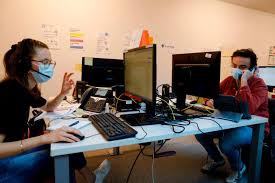
- Staging – Lockdown easing should be staged with low risk individuals released in the first stage followed at intervals of perhaps four weeks apart by cohorts of individuals of increasing vulnerability. Healthy younger people at low risk would be released from lockdown first to return to work. Such releases from lockdown should be based on age, pre-existing conditions and other biomarkers (becoming available through ongoing research – see our blog on “Biomarkers”). Older more vulnerable people over the age of 65 would be amongst the last to be released from lockdown. During this slow process of release, each cohort should be carefully observed for any signs of COVID-19 through an established system of reporting and testing linked to point 2 above.

- Phased Openings – Shops, restaurants, pubs, clubs etc should not all open at once but in a staged way over a period of a few months in such a way that the effects of each opening tranche could be monitored and assessed through the contact and trace mobile phone App data. Social distancing and other measures e.g. Perspex screens in stores, provision of sanitising hand gels and their enforced use should be maintained throughout a prolonged period.

- Massed Gatherings – Other venues of massed gatherings for example football stadiums, horse racing venues, sports clubs theatres, cinemas, clubs etc. should be held back from opening until satisfactory data on case numbers has emerged showing that there is not a resurgence. Then and only then can cautious consideration be given to a reopening strategy for these types of venue be made.

- Face Masks – Simple face mask wearing in public spaces will significantly help to reduce any transmission and should be made mandatory and policed. The onus is on the UK government to devise a way of providing a re-usable washable face mask to every citizen BEFORE lockdown is eased with full instructions on how to use the masks correctly. Such masks could be produced domestically by re-purposing appropriate garment-type manufacturing facilities, purchase from overseas suppliers or a mixture of both. Doing it this way would have absolutely no impact on the supply of medical face masks for health workers as it would be run as a separate operation for a completely different type of mask. Face ask use would not remove the need for social distancing, that should be maintained for an indeterminate period together with education of the public not to become lax in any way with other hygiene measures (e.g. face touching, hand washing etc).
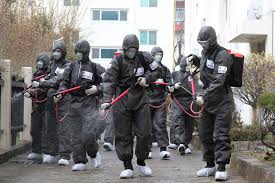
- Sanitisation of Public Places – A meticulous daily schedule of sanitisation of public spaces including public transport for a period of time determined by declines in infection rates in the community. This task could be undertaken by the army or other volunteer groups.
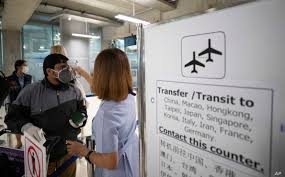
- Overseas Arrivals – Arrivals of passengers from overseas by air, sea, rail and road should be screened and tested for COVID-19 by Genomic Testing (RT-PCR or RT-LAMP) and kept in quarantine until a negative test is returned. Those incoming passengers who return a positive genomic test for infectious virus should be quarantined for a minimum period of 14 days and then retested after this period to confirm they have become virus negative before release to the general community. This particular strategy would require the setting up of quarantine centres, possibly using hotels that are idle at this time. This would be a highly controversial step and one which many will undoubtedly be criticised and opposed but it really is the only way of guaranteeing that the virus is not reintroduced back into the UK from outside our borders. After all let us not forget that the cause of the rapid global spread of the COVID-19 virus was in the first place due to the mass movement of human beings by air travel and it would be counter-intuitive to allow new foreign incomers to re-introduce the disease back into the UK community when we are trying to ease the lockdown. As draconian as it may seem this really is necessary if we are to prevent reintroduction.
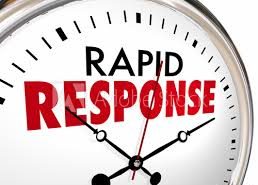
- Rapid Adjustments – Finally there must be a rapid response system in place to make necessary and immediate adjustments to the overall strategy if it becomes obvious that the measures in place are failing to work. This will require careful monitoring of the situation and rapid fully co-ordinated response teams to deal with any event that arises.
All of the above points we made above were written yesterday (22nd April) so it was very satisfying to hear that much (but not all) of what we had suggested has now largely been endorsed at today’s No 10 daily briefing. It was Professor John Newton, a government adviser now charged with overseeing the expansion and management of COVID-19 testing in the UK who delivered some of the most vital information on the strategy that will be used in testing and contact tracing that will support the easing strategy greatly. We do believe that we are moving in the right direction. Ultimately though, it will be time that will be the judge of whether we took the right decisions or not.
A Caveat
We should be watching very carefully as other countries and territories begin to ease themselves out of lockdown. Already Singapore and others have seen a resurrgence in cases after their lockdown was eased. We must learn from their experience and be prepared to carefully analyse what they did to avoid making the mistakes that they might have made.
The UK government must not allow itself to be pressured into prematurely easing lockdown as Nicola Sturgeon in Scotland would seem to want. Let us be led by the science and by learning through observation of what happens in other countries coming out of lockdown and not by any political or economic agenda. If we don’t follow this then the likelihood is that we will pay a far higher price than if we had waited just that little longer.
Our next blog “Drugging COVID-19” will be available in a few days’ time and will deal with clinical trial and experimental work taking place right now both nationally and internationally on new and re-purposed treatments for patients with severe COVID-19.


